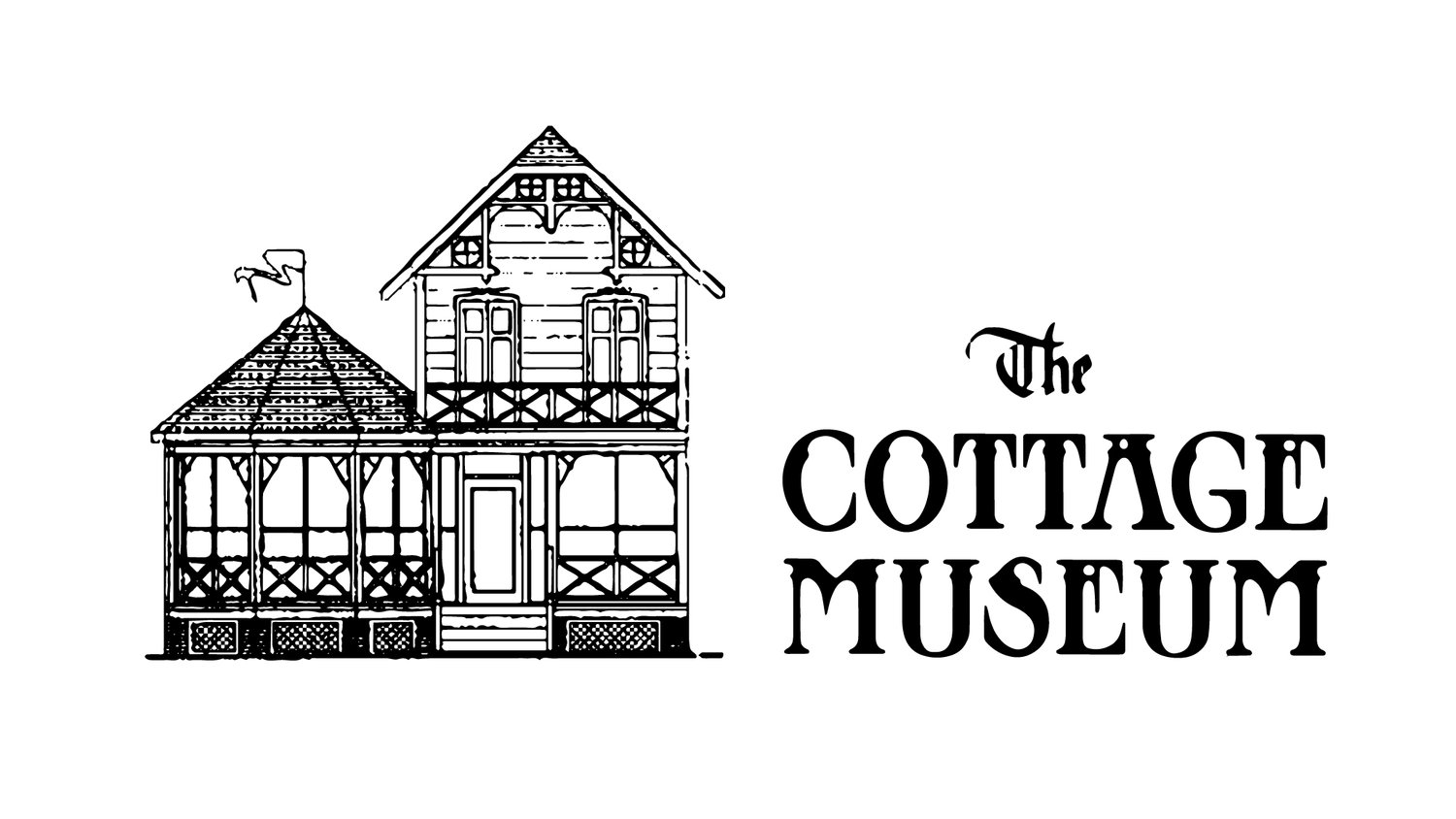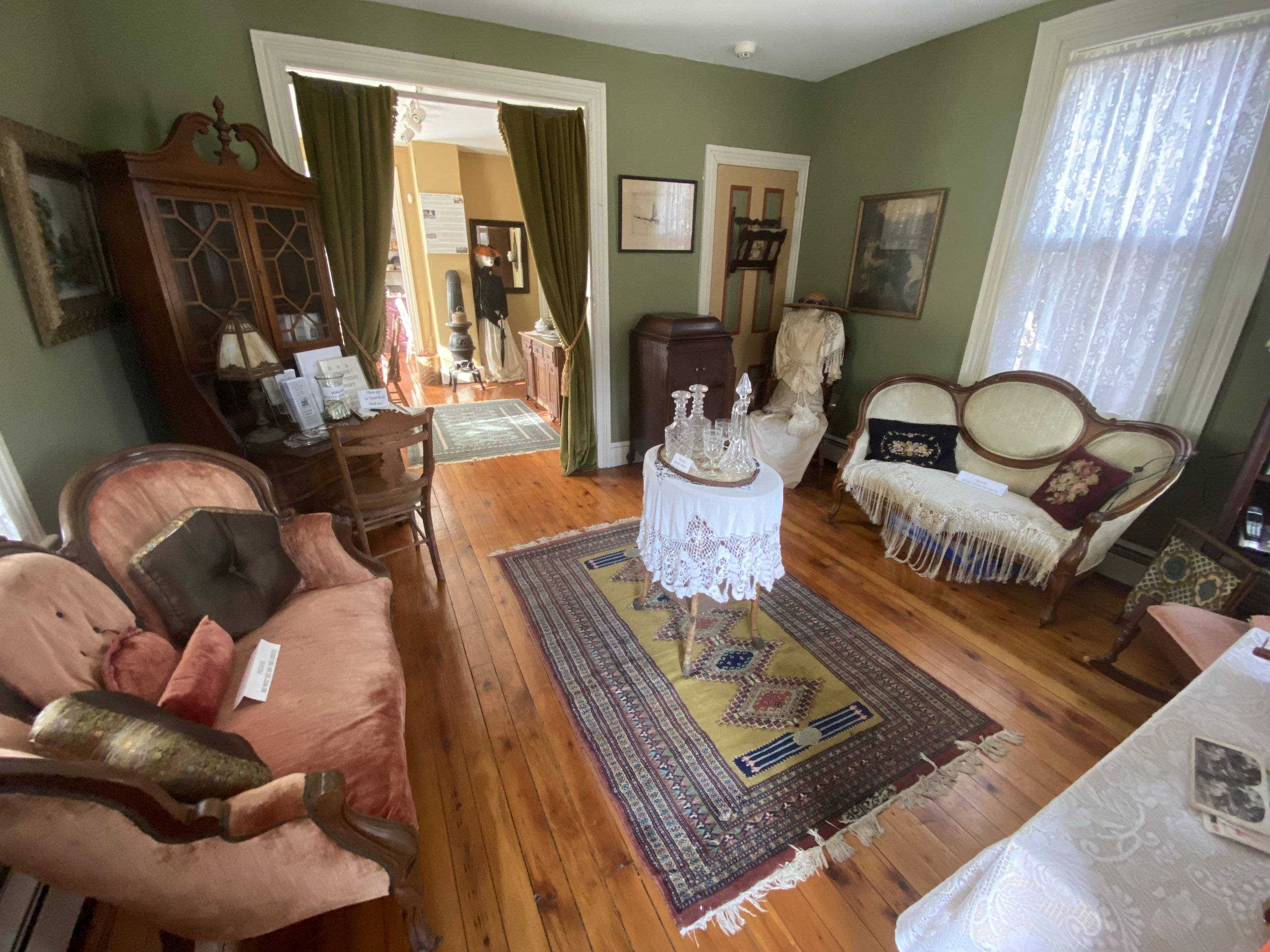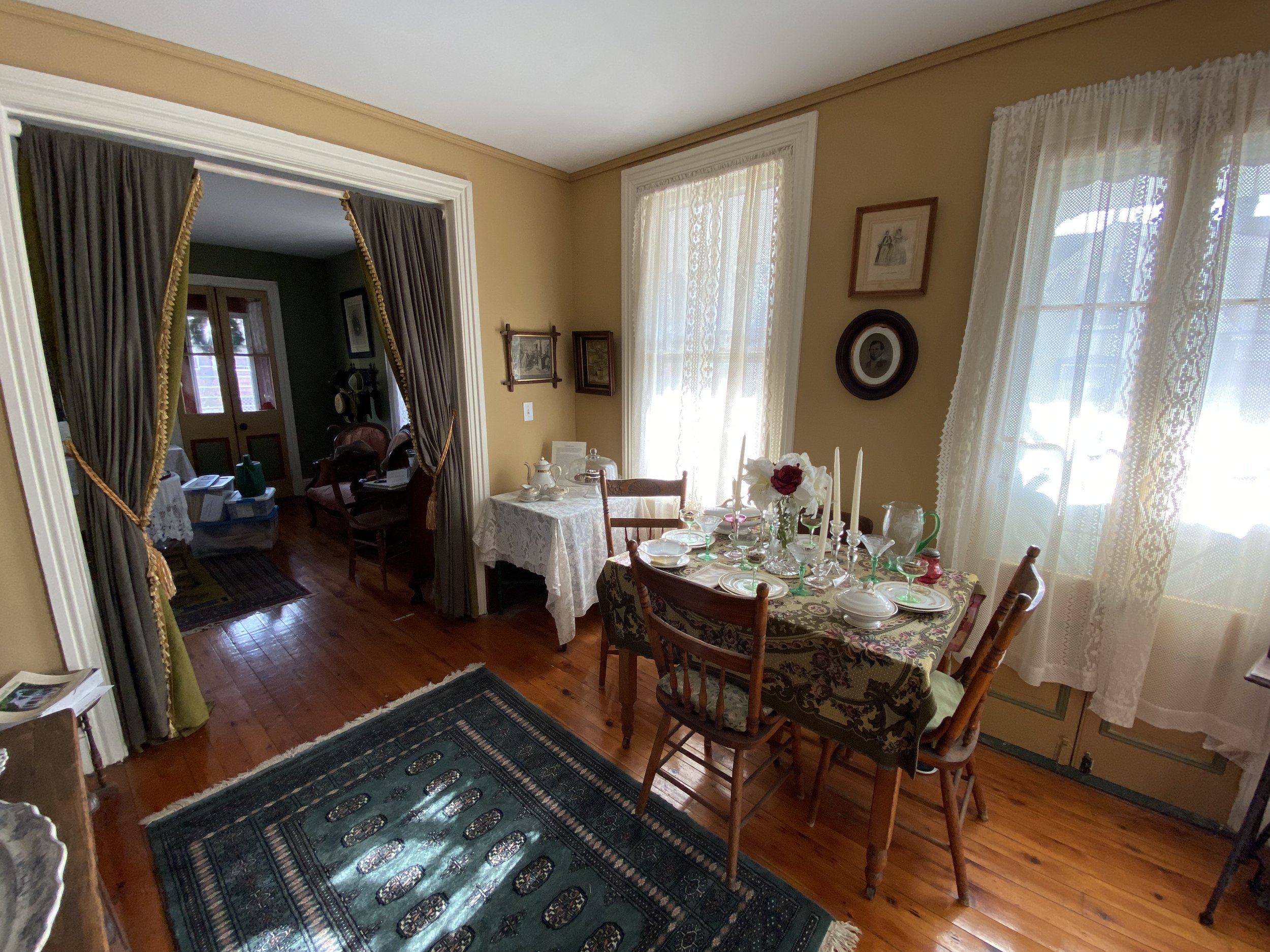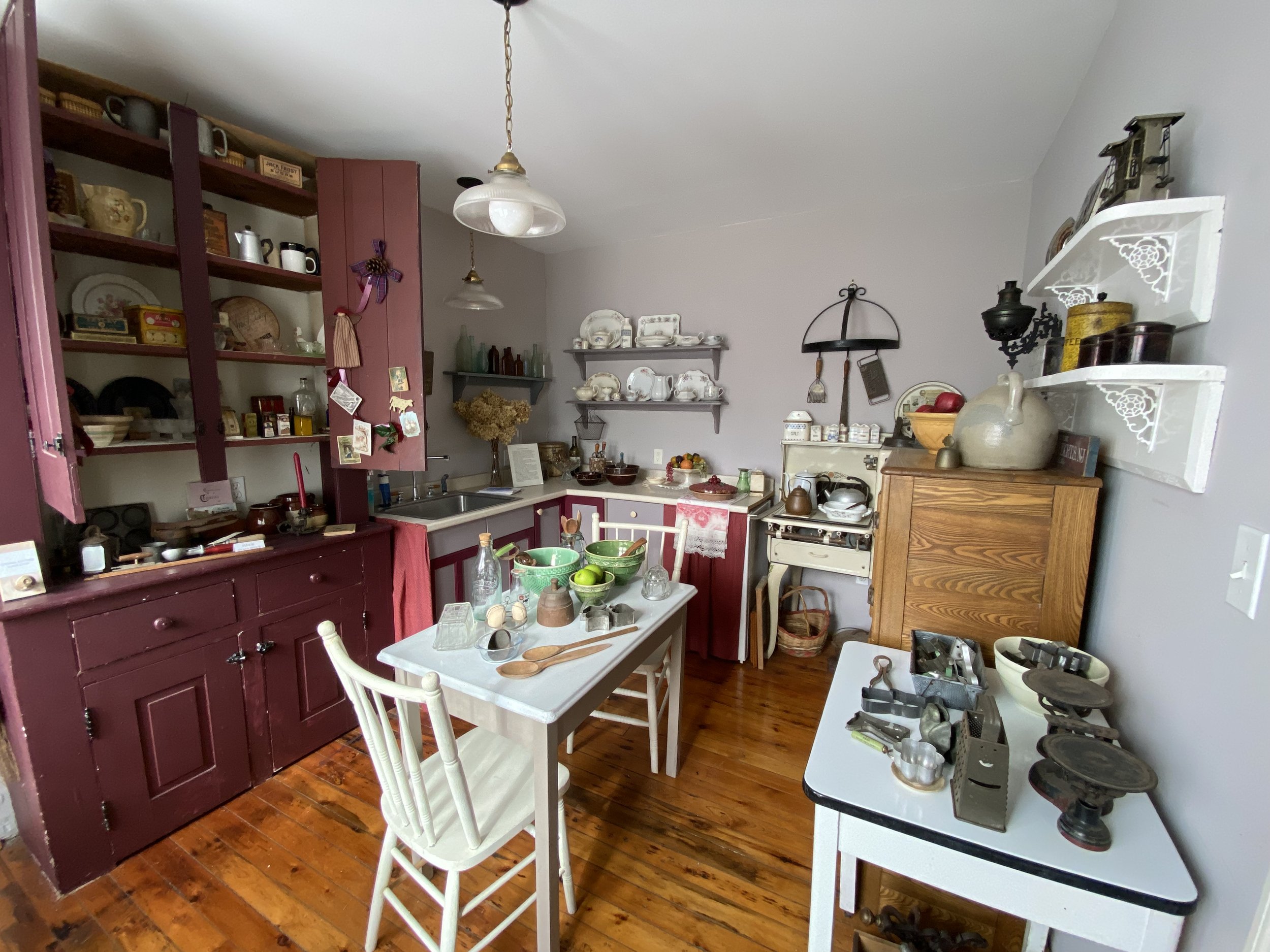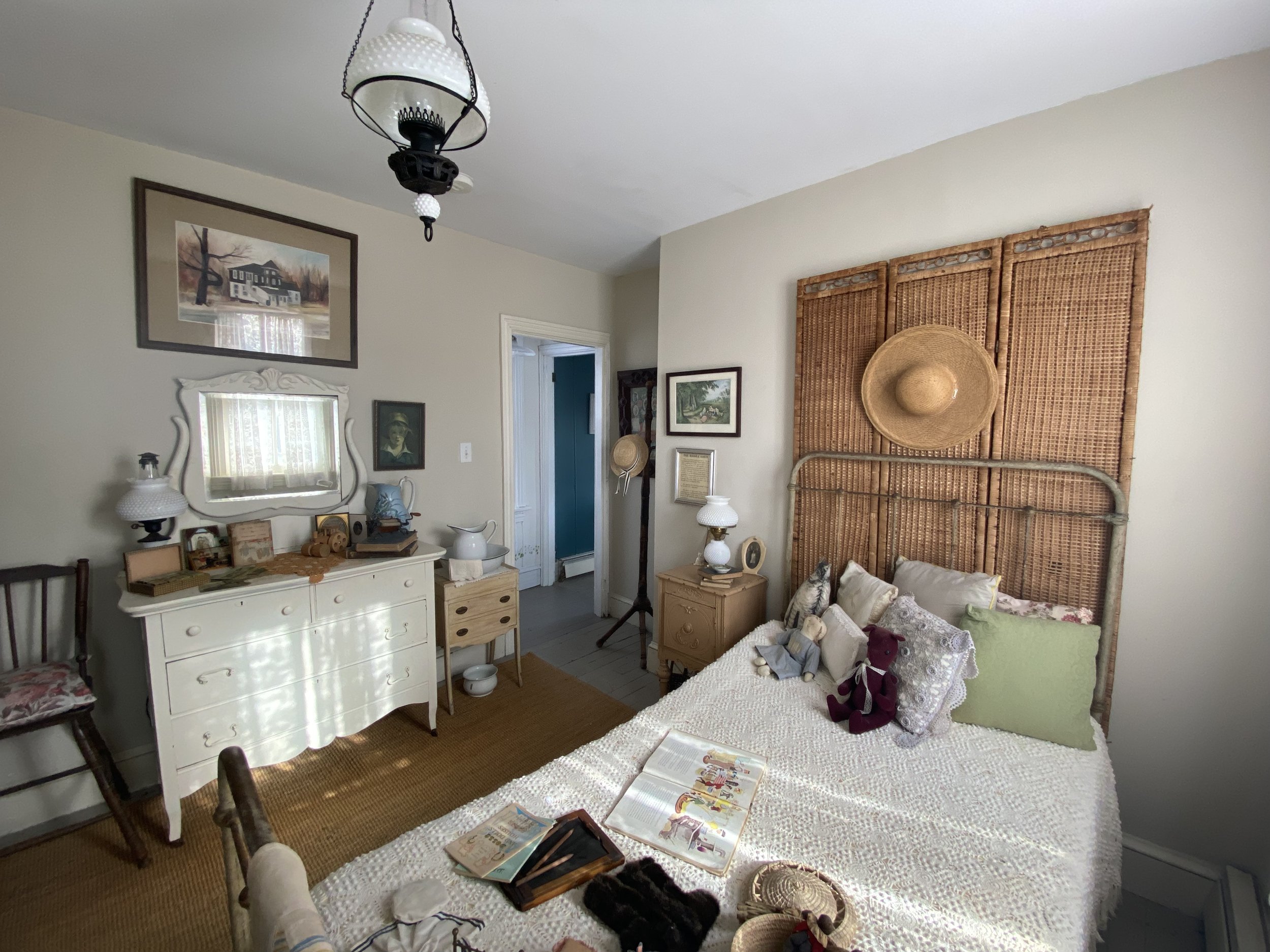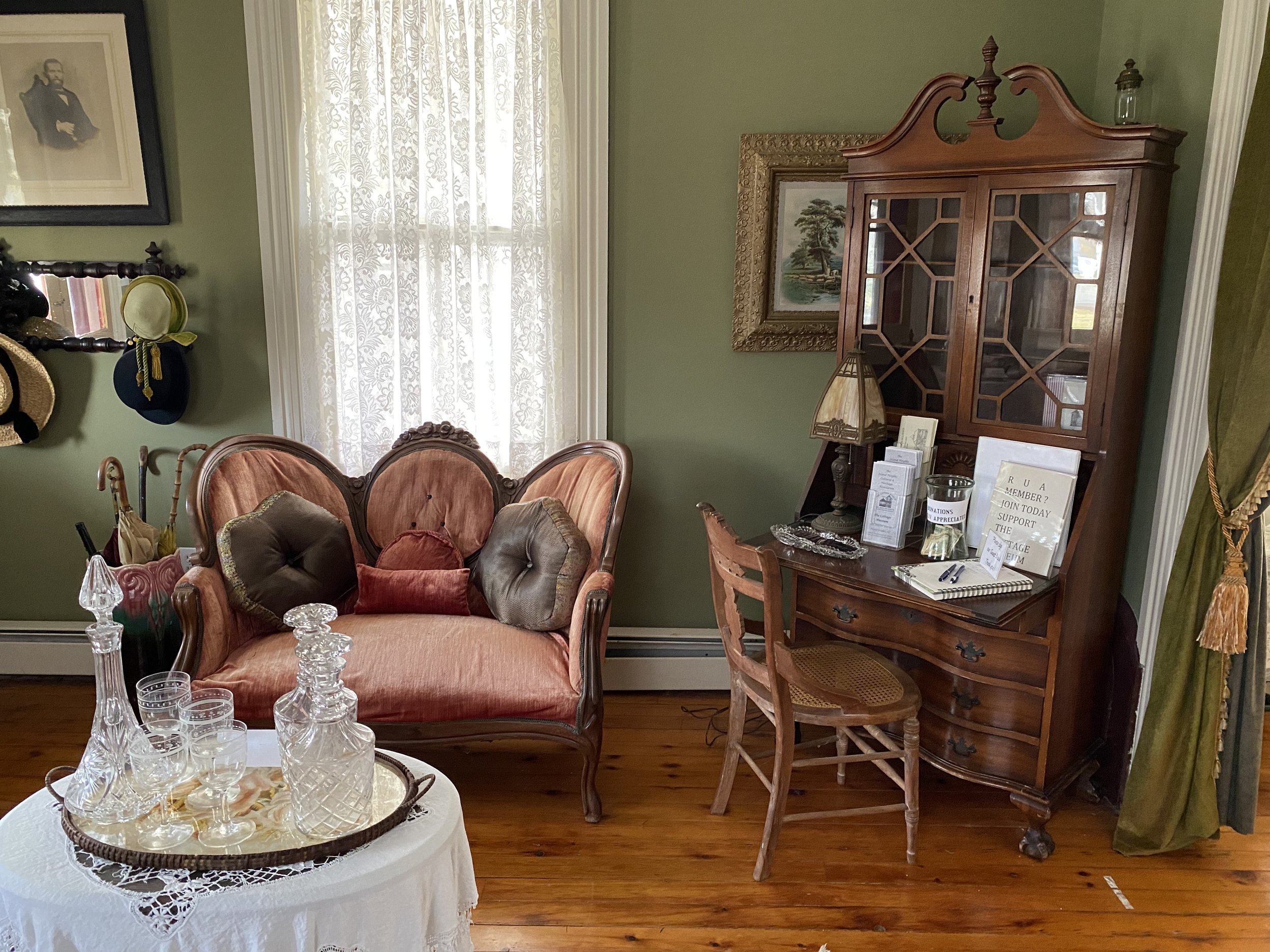
WHAT TO SEE
Here at The Cottage Museum in Island Heights, we have carefully curated and restored this home to what a true Victorian summer cottage would have been like. See below our rooms and artifacts to bring you back in time!
THE DRAWING ROOM
The Victoria drawing room, or reception hall, the most formal and important space in the Victorian home, derived its name from the 16th century term ‘withdrawing room‘ or chamber. The drawing room was typically a ladies’ domain where they would entertain visitors or ‘withdraw to’ after the evening meal. The drawing room made a statement about your status in the community, your gentility, and your good taste. It was not the living room of today, that role was filled more by the Victorian dining room. Lady-like past-times in the drawing room would include canasta, needlepoint or lace making, embroidery, writing letters or sharing local gossip.
In the Victorian summer cottage, equally important, was the ‘front porch’ which also doubled as a reception area for entertaining visitors, to gather for family discussions, to indulge in a good cigar after dinner, or simply to enjoy the sea breezes on a hot summer’s evening.
THE DINING ROOM
In larger homes, men quite often would withdraw either to the library or study for cigars and a snifter of port. In smaller homes and Victorian cottages, men typically lingered in the dining room or moved to the summer porch with a glass of port, a cigar and rousing political discussion.
Dining rooms in the 1880’s served an important role in the social discourse of the Victorian household. They tended to be a masculine space and typically were filled with solid, heavy carved side boards and tables, and draped with rich velvet curtains. Sideboards groaned with the weight of opulent, silver serving pieces and adorned with jewel-like colored glass vases and bowls. The dining room was the perfect place to display one’s wealth. While the summer cottage would have a little less opulence, it still carried the masculine weight of heavy furniture. The sideboard was arguably the most important piece of furniture in the home. There could never be too many objects, these were rooms that were meant to impress during times of entertaining and socializing.
THE KITCHEN
The 1890’s kitchen was the heart of the Victorian home. In middle class homes, meals were the responsibility of the wife and daughter. It took an average of 44 hours a week to prepare, serve, and clean up after meals. Add to that an average of 27 hours per week cleaning and doing laundry, and it is clear the Victorian homemaker was a very, very busy person indeed. With that much to do, the ability to sit down and work was a necessity.
The Victorian era ushered in modern conveniences such as indoor plumbing, the kitchen stove and the ice box all of which had an enormous influence on the organization and outfitting of the 1890’s kitchen.
Victorian kitchens were inwardly-oriented, which meant the primary work space was in the center of the kitchen, usually a large, sturdy table, with the stove, storage, sink, and ice box around the exterior. Victorian kitchens were generally very large spaces, with the average, minimum size 11’x 16’; our little ‘summer cottage’ was very cramped indeed, making the meal preparation all the more difficult.
THE VICTORIAN BEDROOM
The most important distinguishing feature that defines a Victorian bedroom is the fireplace and the necessity for heavy blankets. But, of course, that would not have been important in our Victorian summer cottage. Warm breezes blowing off the Toms River through the double balcony doors, would have kept the bedroom comfortable all summer long. Bedrooms, unlike public areas in the house, usually did not feature fancy wooden moldings, crown molding or picture rails, but instead, would have tended to have simple window and door frames.
Victorian beds were typically small, no king or queen size beds like today, and were very high off the floor so you had to climb up into them. Beds were usually made of dark wood such as mahogany with matching head and footboards with wooden slats to support the mattress. In grander homes, the walls would typically be covered in an elaborate, usually dark colored floral wall paper. In our summer cottage the walls are simply painted in a dark cool color to ward off the heat of a summer day.
